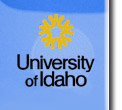|
|
 |
What is Academic Dishonesty?
Academic dishonesty comes in many different forms. Here are some broad definitions and examples of types of academic dishonesty:
• Cheating: copying an assignment, lifting answers from a classmate’s exam, bringing an identical exam or answers to a multiple choice exam to the test, having notes or other resources (calculators, handhelds, note cards) not allowed by the teacher, including any comments or key words written on hat bills, under wristwatches, or entered into cellular phone or calculator memories.
• Plagiarism: not crediting another individual for his or her work. This includes not citing quotes, paraphrased ideas, summaries, photographs, images, maps or websites you may have used for research. Plagiarism extends to short papers, longer research papers, presentations of any sort including websites and Power Point presentations. Lifting any blocks of text without proper citation is considered plagiarism, as is using a photograph without crediting the news agency or individual responsible for the original photo.
--Any assignment that was created by another student that you are turning in as your own work is considered cheating. Purchasing papers from websites or other students on campus is academic dishonesty, the equivalent of cheating and/or plagiarizing.
--Using a paper or assignment you wrote or created for another class as "new" for a different class.
--Providing the materials to facilitate any of the above. You are just as guilty as the cheater if you give them the paper or assignment to copy.
--Skipping a test or turning in assignment late, making false excuses to your professor to avoid point reductions or other repercussions.
--Cooperating on a take home test or other assignment designed to evaluate an individual, not the performance of a group.
© 2004 University of Idaho. All rights reserved. University of Idaho Moscow, ID 83844